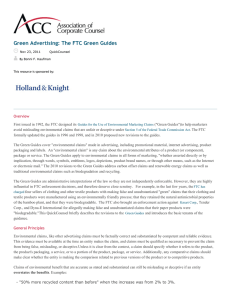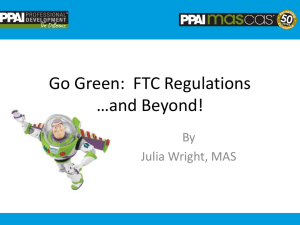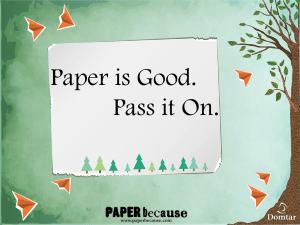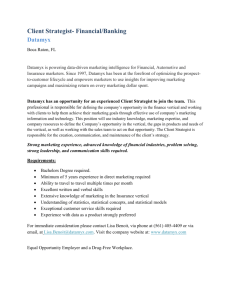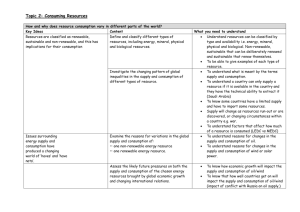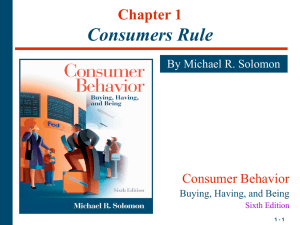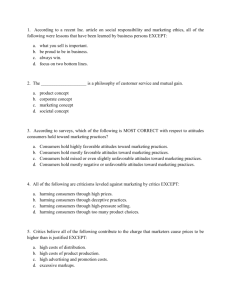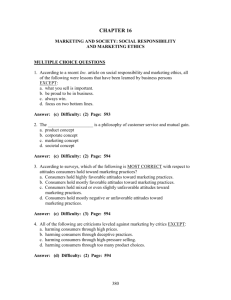Review of Revised FTC Green Guides (2012 update) The Federal
advertisement
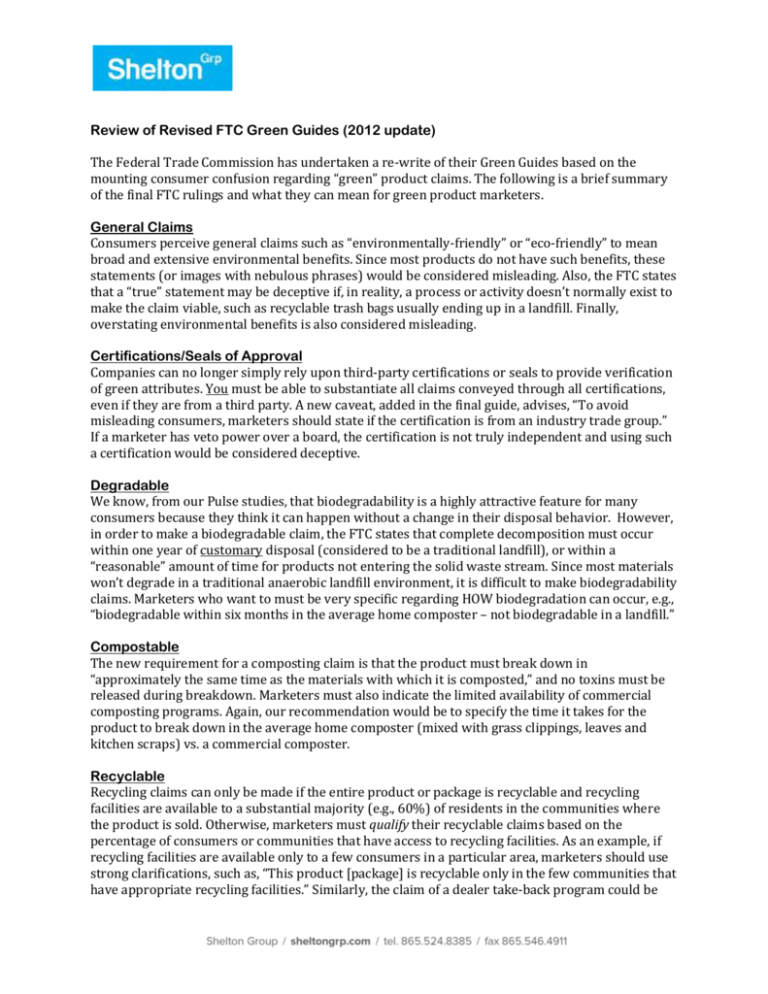
Review of Revised FTC Green Guides (2012 update) The Federal Trade Commission has undertaken a re-write of their Green Guides based on the mounting consumer confusion regarding “green” product claims. The following is a brief summary of the final FTC rulings and what they can mean for green product marketers. General Claims Consumers perceive general claims such as “environmentally-friendly” or “eco-friendly” to mean broad and extensive environmental benefits. Since most products do not have such benefits, these statements (or images with nebulous phrases) would be considered misleading. Also, the FTC states that a “true” statement may be deceptive if, in reality, a process or activity doesn’t normally exist to make the claim viable, such as recyclable trash bags usually ending up in a landfill. Finally, overstating environmental benefits is also considered misleading. Certifications/Seals of Approval Companies can no longer simply rely upon third-party certifications or seals to provide verification of green attributes. You must be able to substantiate all claims conveyed through all certifications, even if they are from a third party. A new caveat, added in the final guide, advises, “To avoid misleading consumers, marketers should state if the certification is from an industry trade group.” If a marketer has veto power over a board, the certification is not truly independent and using such a certification would be considered deceptive. Degradable We know, from our Pulse studies, that biodegradability is a highly attractive feature for many consumers because they think it can happen without a change in their disposal behavior. However, in order to make a biodegradable claim, the FTC states that complete decomposition must occur within one year of customary disposal (considered to be a traditional landfill), or within a “reasonable” amount of time for products not entering the solid waste stream. Since most materials won’t degrade in a traditional anaerobic landfill environment, it is difficult to make biodegradability claims. Marketers who want to must be very specific regarding HOW biodegradation can occur, e.g., “biodegradable within six months in the average home composter – not biodegradable in a landfill.” Compostable The new requirement for a composting claim is that the product must break down in “approximately the same time as the materials with which it is composted,” and no toxins must be released during breakdown. Marketers must also indicate the limited availability of commercial composting programs. Again, our recommendation would be to specify the time it takes for the product to break down in the average home composter (mixed with grass clippings, leaves and kitchen scraps) vs. a commercial composter. Recyclable Recycling claims can only be made if the entire product or package is recyclable and recycling facilities are available to a substantial majority (e.g., 60%) of residents in the communities where the product is sold. Otherwise, marketers must qualify their recyclable claims based on the percentage of consumers or communities that have access to recycling facilities. As an example, if recycling facilities are available only to a few consumers in a particular area, marketers should use strong clarifications, such as, “This product [package] is recyclable only in the few communities that have appropriate recycling facilities.” Similarly, the claim of a dealer take-back program could be considered deceptive if dealers are not located in a substantial majority of communities where a product is sold, even if all the company’s dealers recycle the product. Recycled Content If the product contains less than 100% recycled materials (excluding minor, incidental components), the specific percentage must be stated. Renewable Energy Renewable energy sources must be specified and must be qualified if less than all energy used comes from a renewable source. And if RECs are sold, the manufacturer cannot claim the use of renewable energy. Carbon Offsets Marketers should have competent and reliable scientific evidence to support carbon offset claims. If the offset is required by law, it should not be advertised. Renewable Materials Specific information about renewable materials should include what the renewable material(s) is, how it fits the definition of renewable and its sourcing. The guides provide an example: “Our flooring is made from 100 percent bamboo, which grows at the same rate, or faster, than we use it.” Ozone-Safe and Ozone-Free Claims The guides state that it is deceptive to claim a product, package or service is safe for the ozone layer or atmosphere. Source Reduction Claims Marketers should qualify and substantiate source reduction claims. For example, marketers could claim “10% less waste” than the previous version only if they can substantiate that the product’s disposal results in a 10% reduction of waste by weight or volume in the solid waste stream. Refillable Claims If marketed as “refillable,” a marketer must provide the means to refill the package by selling refill packs. Free-of/Non-Toxic Even though certain “free-of” claims may be true, they could be considered deceptive if other substances within the product pose the same or similar environmental risks. It would also be considered misleading if a manufacturer states a product is “free of” a substance that has never been associated with that product’s category. Non-toxic claims should have “competent and reliable scientific evidence” that it is non-toxic to both the environment and humans.
